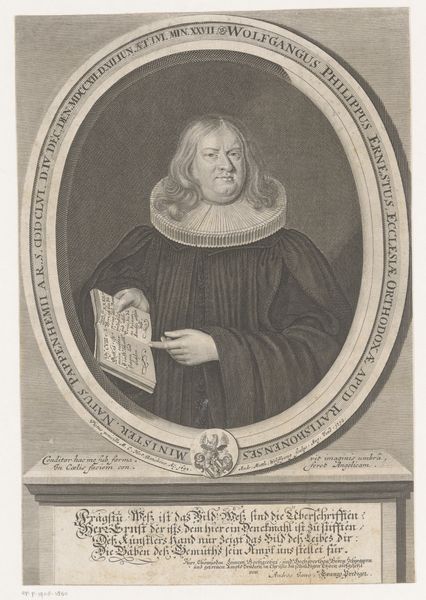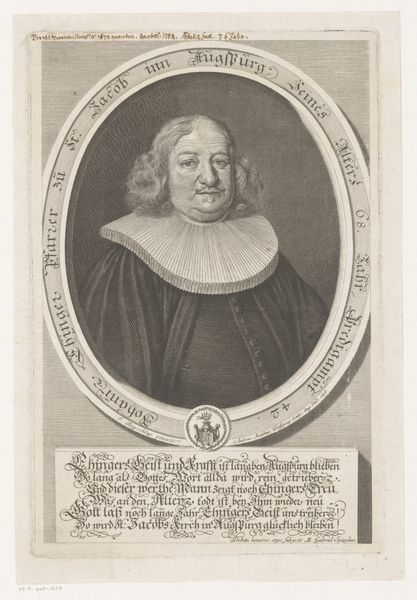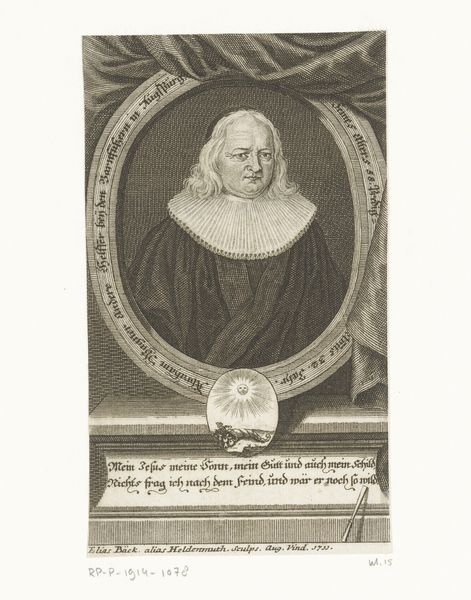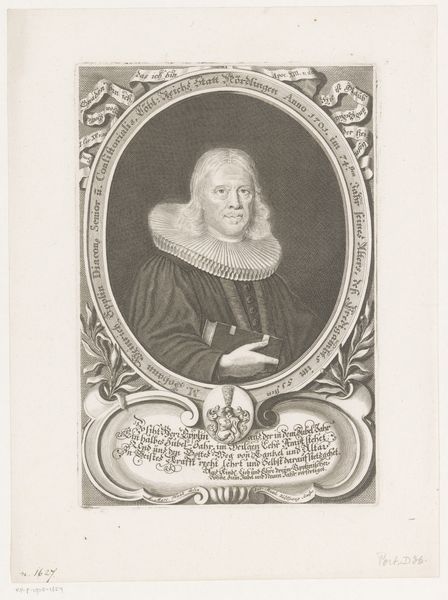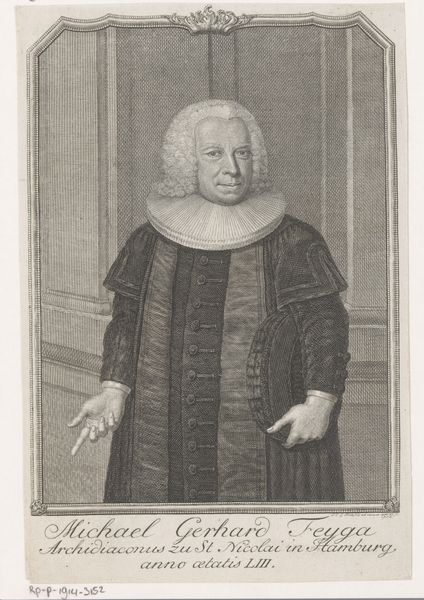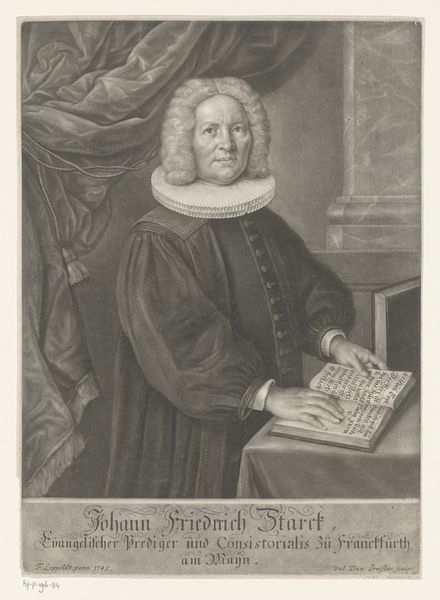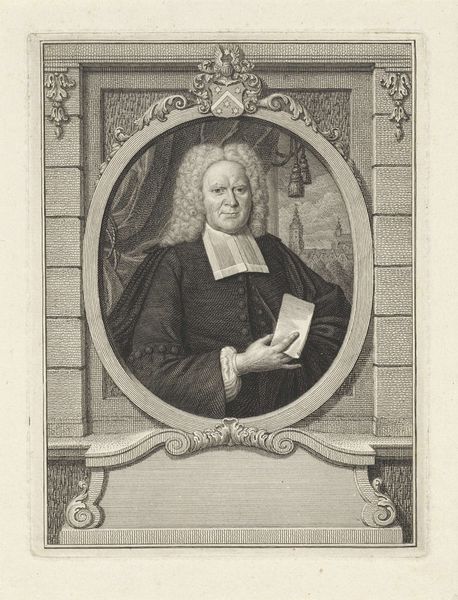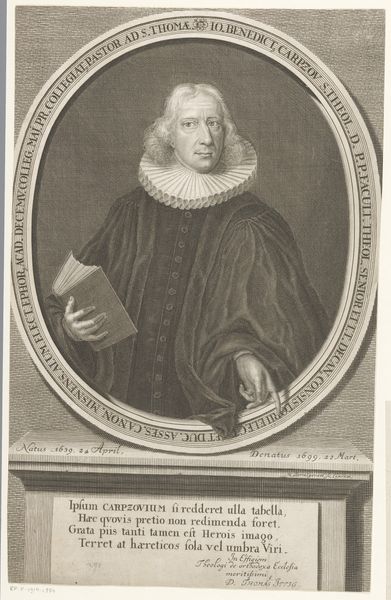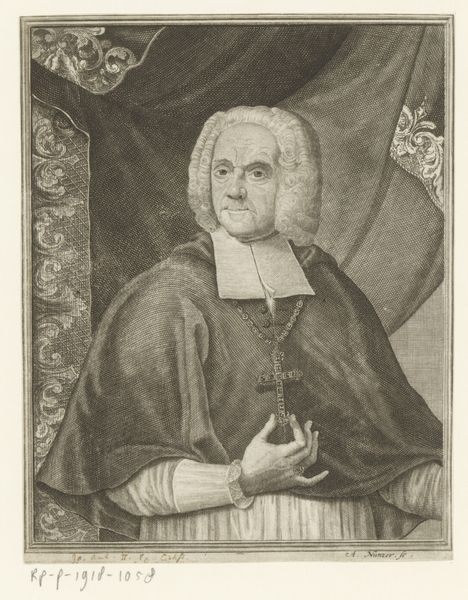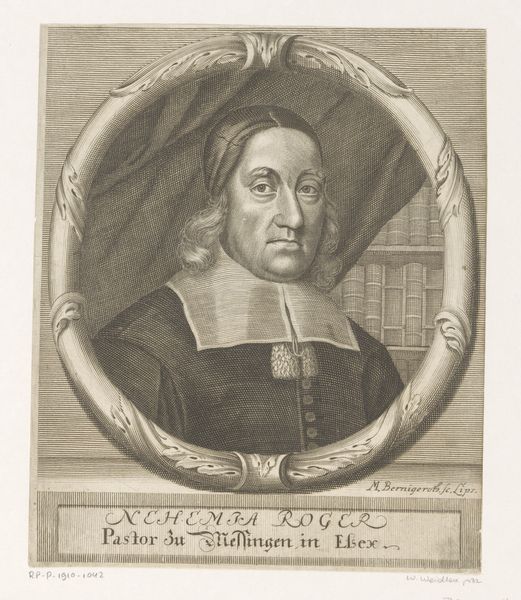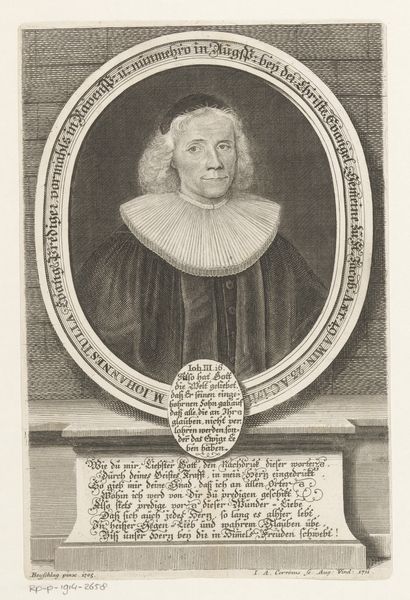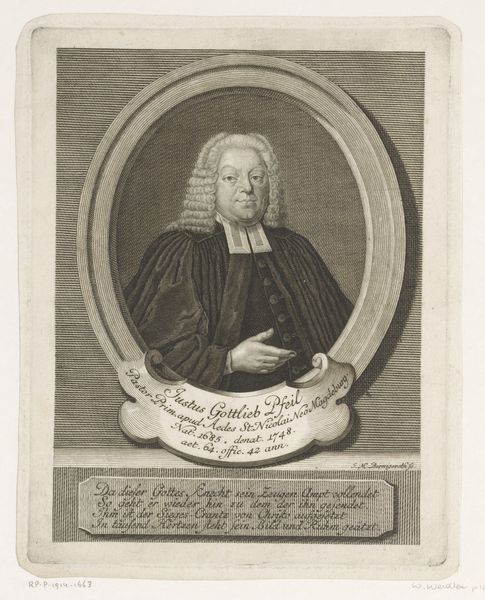
paper, engraving
#
portrait
#
baroque
#
old engraving style
#
charcoal drawing
#
paper
#
portrait reference
#
line
#
engraving
Dimensions: height 256 mm, width 183 mm
Copyright: Rijks Museum: Open Domain
Curator: Before us we have Georg Kilian’s 1709 engraving, "Portret van Abraham Wagner op 56-jarige leeftijd," currently held in the Rijksmuseum collection. It depicts Abraham Wagner, a preacher, at the age of fifty-six. Editor: It's remarkable, this level of detail captured simply through lines on paper. There’s a stillness, a somberness almost, that comes across, even through the rather rigid pose and framing. Curator: Absolutely, and thinking about the materials informs this. The labor invested in such a detailed engraving, transferring an image through the precise carving of a metal plate, then pressing it onto paper – it speaks volumes about the value placed on representation and, potentially, religious figures at the time. The reproductive quality of an engraving made the image of Wagner accessible, too. Editor: The historical moment also carries weight. It places Wagner squarely within the early Enlightenment. We can also look at the gender politics: while Wagner held power through his position as a preacher, the image circulated with, and because of, Kilian’s skilled labour in production of this portrait. There is also Wagner's elaborate collar—is this a symbol of authority or a burdensome uniform prescribed by societal expectation? Curator: Precisely. This piece allows us to trace the evolution of printmaking as a critical mode of visual communication. Each line bears evidence of a skilled hand enacting the labor of image making. I wonder, were portraits like these instrumental to solidifying social standing at that time? Were images of religious leaders regarded as personal possessions, as instruments to exert dominance within Protestant communities? Editor: I find myself reflecting on its contemporary meaning, as well. What narratives persist when we look at art of the past? It gives us so much to think about. Curator: It certainly does, a powerful glimpse into the material culture and social structures of the 18th century.
Comments
No comments
Be the first to comment and join the conversation on the ultimate creative platform.
